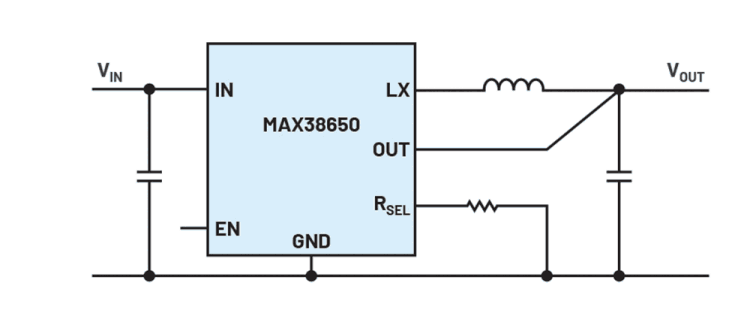
Battery-operated circuits must be energy-efficient for the battery to last a long time. For this, energy-efficient components are selected and combined into a system. The fewer building blocks in an electrical circuit, the greater the energy efficiency of the overall system.
Figure 1 shows an electrical water meter as an example of a battery-operated device. The system uses a MAX32662 microcontroller, with just one supply voltage. The input voltage range lies between 1,71 and 3,63 V.
The microcontroller can be supplied directly by the battery, which delivers a voltage of 2 to 3,6 V, depending on the temperature and state of charge. Only a few additional components are required in the circuit, which means that the overall system efficiency can be very high. However, the current consumption of the microcontroller is largely independent of the actual supply voltage. Whether the microcontroller is operated with 2 or 3,6 V makes no difference to this IC.
For cases like this, new nanopower switching regulators can be used. With these types of switching regulators, the battery voltage can be converted efficiently to a lower value, such as 2 V. A nanopower switching regulator delivers the required current for the microcontroller at the output, but requires less current at the higher voltage on the battery side. Figure 2 shows the circuit for a water meter with an added high-efficiency nanopower switching regulator, the MAX38650.

With the addition of this IC, the battery life can be significantly extended. Life extensions of 20% and higher are easily possible; the exact savings effect differs from case to case because of the numerous influencing parameters, such as temperature, peak currents, periodic switch-off of the sensor, and others. The quiescent current of the added DC-to-DC converter is decisive here. If the switching regulator consumes too much energy, the anticipated savings disappear.
Figure 3 shows a circuit with the MAX38650 nanopower voltage regulator. As the name indicates, the quiescent current of this IC is in the nanoampere range. During operation, the switching regulator draws only 390 nA of quiescent current. During times when the DC-to-DC converter can be switched off, it needs only 5 nA of shutdown current. This nanopower voltage converter is ideal for saving energy in a system such as the one shown in Figure 1.

As can be seen in Figure 3, only a few passive external components are required. Instead of a resistor voltage divider, only one resistor on the RSEL pin is used to set the output voltage. A resistor voltage divider consumes a considerable amount of current, which, depending on the voltage and resistor, can greatly exceed the quiescent current of the MAX38650. Thus, this IC uses a variable resistor, which is only briefly checked when the circuit is switched on. The IC detects the set-point value for the output voltage through the fact that for a short time during switch-on, 200 µA of current is passed through this variable resistor. The resulting voltage is measured and then stored internally in the IC. This means there are no energy losses during operation through a conventional voltage divider.
By adding a voltage converter, it is possible to increase the efficiency of a system and extend the life on a charge of a battery-operated device.
| Tel: | +27 11 923 9600 |
| Email: | [email protected] |
| www: | www.altronarrow.com |
| Articles: | More information and articles about Altron Arrow |

© Technews Publishing (Pty) Ltd | All Rights Reserved